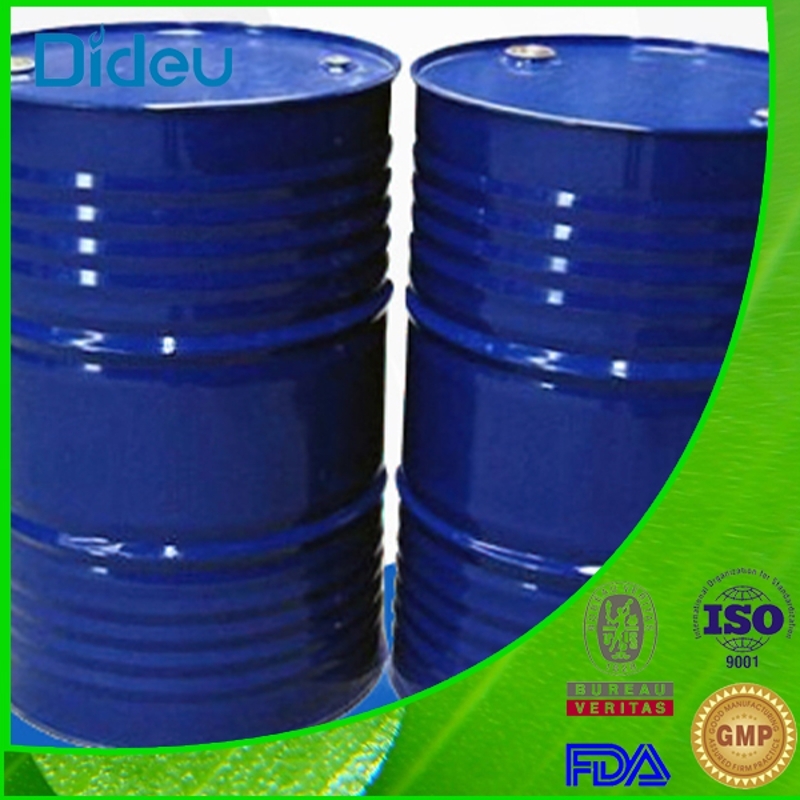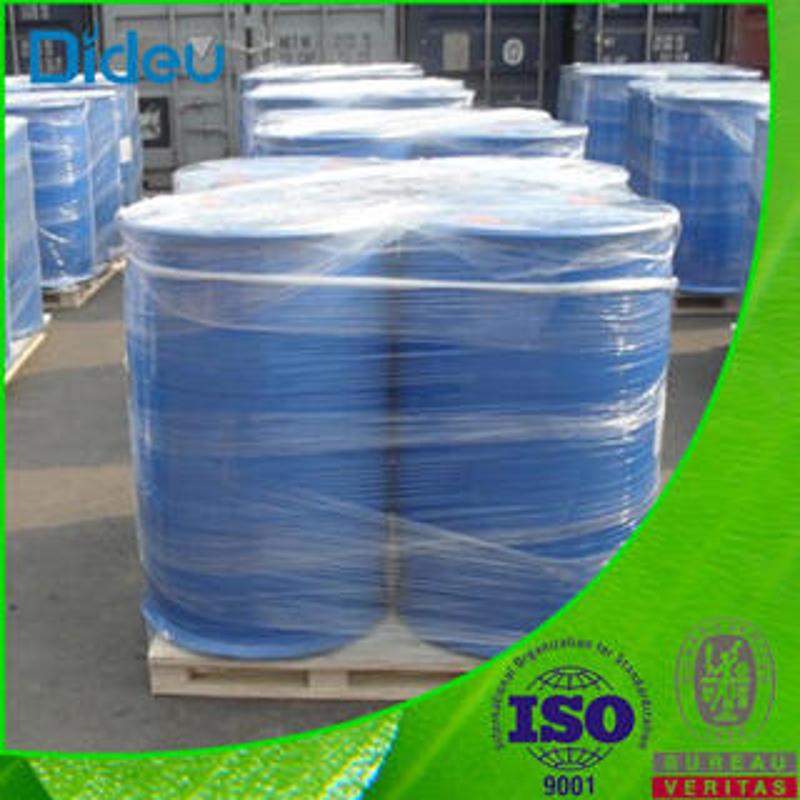Effect of flaky pigments on the performance of zinc-rich primers on alcohol-soluble scales.
-
Last Update: 2020-09-19
-
Source: Internet
-
Author: User
Search more information of high quality chemicals, good prices and reliable suppliers, visit
www.echemi.com
-sheet layered pigments on the performance of alcohol-soluble scale zinc-rich primers
Chang Daoyang, Li Yunde, Huang Xiaofeng, Dong Xiangyun (Beijing Red Lion Paint Co., Ltd., Beijing 101111) 0 foreword
zinc-rich coatings are widely used in the field of heavy anti-corrosion primers in steel facilities because of their excellent electrochemical protection. The electrochemical protection is that the corrosion potion (-0.762 V) of zinc powder is lower than that of steel corrosion (-0.440 V), and in the event of corrosion, zinc powder is preferred to protect steel, i.e. at the expense of anode cathode protection. This effect requires electrical conduction between the coating and the steel substrate. In the traditional zinc-rich coating with spter zinc powder, to achieve the electrical conduction between the coating and the steel substrate, a large amount of zinc powder needs to be added to achieve electrical conduction through the point contact between the spter zinc powder. In this way, the amount of zinc powder in the coating is mostly more than 80%, which is far more than the critical pigment volume concentration (CPVC) of the coating itself, at this time the formation of the coating porous, poor shielding performance. At the same time, the existence of a large number of zinc powder makes it easy to occur zinc powder precipitation in the construction, and then caused construction problems such as blocking guns, affecting the construction quality and construction efficiency.
scaly zinc powder was originally used in Dacro coating, the pre-treated work pieces were immersed in a coating containing scaly zinc powder, which was sintered to form a coating film. However, Dacro's sintering process does not have the performance of on-site construction and at room temperature curing of ordinary coatings. Scale-shaped zinc powder has excellent parallel joining properties, so that it can form a laminated tile-like alternate layer tie-up in the coating film, through the zinc sheet between the joints and thus easy to achieve the coating of electrical conduction, can greatly reduce the amount of zinc powder in the coating. The structure of the sheet layer will form a "maze" effect on the coating, prolonging the diffusion path of the corrosive medium in the coating, and thus the shielding performance is excellent. The scale structure of zinc powder also gives it good suspension properties, thus avoiding the ills of the easy precipitation of sputular zinc powder in the coating. Therefore, scaly zinc powder has a broad application prospect in the general temperature-cured zinc-rich coating.
test was conducted with alcohol-soluble ethyl silicate resin as a film-forming substance and scaly zinc powder as the main rust-proof pigment preparation. Two different types of sheet-like pigments, conductive aluminum powder and non-conductive mica iron oxide were investigated, and the effects of coating adhesion, conductivity and salt spray resistance on the zinc-rich primer of the alcohol-soluble scales were investigated.1 Test part
1.1 Test raw materials and instruments
raw materials: scaly zinc powder, ethyl orthionate, polyethylene alcohol butyl resin, mica iron oxide, aluminum powder, butanol, ethanol, distilled water, hydrochloric acid, etc.
: berries, high-speed dispersion machine, balance, etc.
1.2 Test Process
1.2.1 Preparation of a zinc-rich primer for alcohol-soluble scales
A parts, i.e. preparation of the main paint: the selection of polyethylene alcohol butyl resin liquid as the carrier of scale-shaped zinc powder, the scale-shaped zinc powder and other layered pigments dispersed to the resin solution at high speed. The polyethanol butyl resin is completely dissolved in a mixture of ethanol and orthodol to make a resin solution with a 10% mass fraction. The mass ratio of ethanol and ordinol in the mixed solution is 1:1. The scale-shaped zinc powder and the selected auxiliary sheet layer pigment were then dispersed in turn into the resin solution, with 900 r/min dispersed at a high speed of 30min. The flaky pigment selected for the No. 1 sample is aluminum powder, the flaky pigment selected for the No. 2 sample is scaly zinc powder itself, and the flaky pigment selected for the No. 3 sample is mica iron oxide, and its formula is shown in Table 1.. Part B is the preparation of curing agent: si-32 ethyl silica is selected to dissolve it in orthoanol to form a solution. A small amount of thick hydrochloric acid is taken and dissolved in distilled water to form a solution of thin hydrochloric acid. By dripping, the solution of thin hydrochloric acid is added to the solution of ethyl silicate and dehydrated by catalysis, the formula of which is shown in Table 2.1.2.2 Preparation of the test model
the above-mentioned preparation of the 1st, 2nd and 3rd mellow scales zinc-rich primer A sample and B parts in accordance with the quality ratio of 1:1 mixed evenly. Then spray a test sample on a steel plate with a blast rating of Sa2.5 to detect coating-related properties.
1.2.3 Model Coating Performance Detection
1.2.3.1 Adhesion Performance Test
Adhesion is the basis for the coating to provide corrosion and decorative properties to the substrate. Alcohol-soluble inorganic zinc-rich primer is a continuous membrane formed by the hydrolysis of ethyl silica and water vapor reaction in the air, while ethyl silica hydrolysis can also react with steel on the surface of a substrate with high activity after blasting, forming a structure of iron-silicate-zinc, which has a strong chemical binding force on its surface. In accordance with the GB/T 5210-2006 "color paint and varnish pull adhesion test" national standards, test the above three test alcohol-soluble scale zinc-rich primer sample coating pull adhesion performance.
1.2.3.2 Testing of conductivity
Because the electrochemical cathode protection of zinc-rich primers is premised on the mutual electrical conduction between zinc powders in the coating, the resistivity of zinc-rich primer coatings is directly related to its electrochemical protective effect. In accordance with the GB/T 16906-1997 "oil tank conductive electrostitive coating resistivity determination method" of the national standard, test the above three alcohol-soluble scale zinc-rich primer coating surface resistivity.
1.2.3.3 Test of salt spray resistance
The salt spray test is an accelerated test by artificially simulating the salt spray environment and examining the corrosion resistance of the material. For coating, it is a means to investigate its anti-rust protection ability of metal substrate. According to GB/T 1771-2007 "color paint and varnish resistance to neutral salt spray performance determination" of the national standard, the above three alcohol-soluble scale zinc-rich primer coating salt spray resistance performance.2 Results and Discussion
2.1 Adhesion Test Results
Adhesion test with the pull-out adhesion tester for the above three alcohol-soluble scale zinc-rich primer test model coating adhesion test, test results are seen in Table 3.analysis test sample adhesion test results, its destructive strength is about 4MPa, and are the internal damage of the coating, indicating that the coating on the test model substrate is firmly attached, the anti-pull strength of the coating itself is the control factor of coating damage. Comparing the data of 3 samples, it is indicated that the addition of two pigments, aluminum powder and mica iron oxide, did not cause a change in the adhesion strength of the coating.
2.2 Conductive performance test results and discussion
with the paint resistivity meter on the above three alcohol-soluble scale zinc-rich primer test model to do the measurement of the surface resistivity of the coating, the test results can be seen in Table 4.analysis of the surface resistivity test results of the test, the surface resistivity of all three is less than 107 ohm, indicating that the electrical conduction performance of the three tests is good, to ensure the effect of scaly zinc powder in the coating on the electrochemical protection of the substrate. Compared with the 3 samples, the surface resistivity of the No. 1 sample is 1 to 2 orders of magnitude lower than that of the No. 2 and No. 3 samples. The reason for this is that the sheet-layered aluminum powder in the formulation is a conductor and is conductively superior to the scale-shaped zinc powder, and the mixed use of flaky zinc powder reduces the overall surface resistivity of the coating. The no. 3 sample, added in the formula for non-conductive flaky mica iron oxide, and scale-like zinc powder re-matching, did not cause a significant decrease in the resistance of the coating surface, indicating that the existing mica iron oxide addition did not affect the parallel mating between zinc powder, and then to ensure the electrical conductivity of the coating.
2.3 Salt mist resistance test results and discussion
the above three alcohol-soluble scale zinc-rich primer test model for 1,200 h of neutral salt spray test, the coating will be cut off before the test, the test results can be seen in Table 5.Comparing the corrosion expansion width of the 3 samples, the expansion width of the 1st and 3rd samples is smaller than the 2nd sample of the pigment only scale-shaped zinc powder, indicating that the addition of both pigments contributes to the improvement of the coating's salt spray resistance, especially the mica iron oxide.
compared to the No. 1 and No. 2 samples, wherein the pigment aluminum powder and zinc powder electrode potential are lower than the electrode potential of iron, both relative to the substrate have cathode electrochemical protection effect, but there is aluminum powder No. 1 coating surface resistivity is lower than no. 2 sample, then its electrical conductivity is better than No. 2 sample, and then its cathode protection effect on the substrate is better than No. 2 sample. This inference is confirmed by the test results of salt spray resistance.
compared to the No. 2 and No. 3 samples, the adhesion of the coating and surface resistivity are basically the same. For the protective structure of zinc-rich coating on steel substrate, in addition to cathodic protection, but also the effect of shielding effect. Mica iron oxide is an excellent shielding effect, without affecting the coating electrical conductivity and cathode protection effect, the addition of the appropriate amount of mica iron oxide helps to enhance the overall protection effect of zinc-rich coating on the substrate. This is consistent with the results of the salt spray test. 3 Conclusion
Based on the test results of the adhesion, conductivity and salt spray resistance of two different types of layered pigments to the zinc-rich primer of alcohol-soluble scales, the following conclusions can be drawn:
(1) For the zinc-rich coating, the addition of the appropriate amount of laminated aluminum powder in the formulation will reduce the surface resistivity, improve the electrical conductivity and salt spray resistance of the coating, without affecting the adhesion of the coating, thereby improving the protective effect of the coating on the steel substrate.
(2) also without affecting the resistivity of the coating surface, the appropriate amount of mica iron oxide can improve the salt spray resistance of the coating and improve the protective effect of the coating on the steel substrate. This method can reduce the amount of zinc powder in the formula, save zinc resources, but also reduce the cost of the formula. .
This article is an English version of an article which is originally in the Chinese language on echemi.com and is provided for information purposes only.
This website makes no representation or warranty of any kind, either expressed or implied, as to the accuracy, completeness ownership or reliability of
the article or any translations thereof. If you have any concerns or complaints relating to the article, please send an email, providing a detailed
description of the concern or complaint, to
service@echemi.com. A staff member will contact you within 5 working days. Once verified, infringing content
will be removed immediately.






